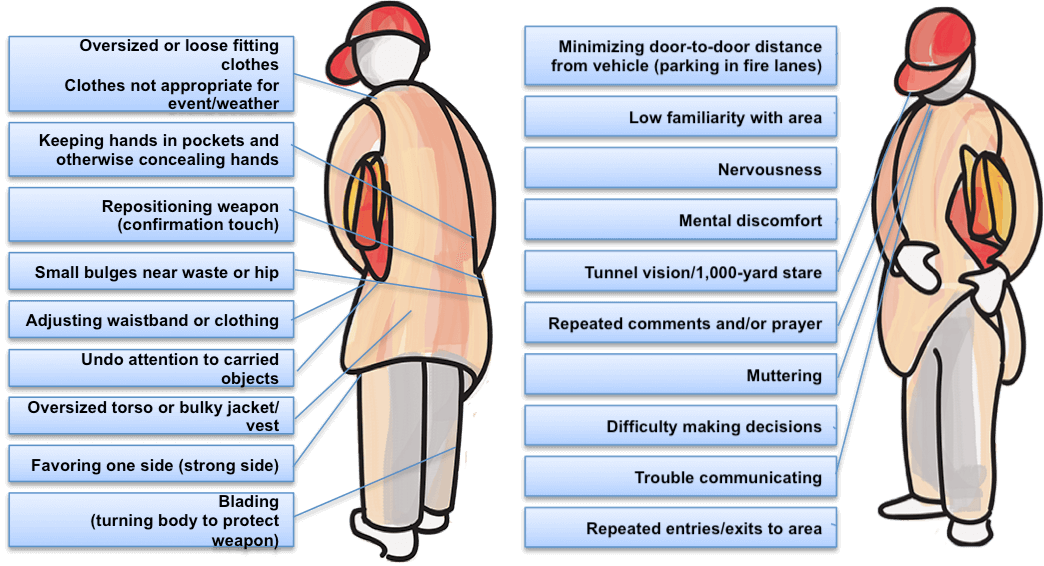Incredibly impactful video done by the Sandy Hook Promise – you may have seen it on major television outlets.
It’s an unfortunate reality in today’s times, but situational awareness can help prevent these tragedies.
Here are some awareness and tips provided by https://www.ready.gov/active-shooter
This page describes what to do if you find yourself in an active shooting event, how to recognize signs of potential violence around you, and what to expect after an active shooting takes place.
Remember during an active shooting to RUN. HIDE. FIGHT.
Active Shooter
Before:
Be Informed
- Sign up for an active shooter training.
- If you see something, say something to an authority right away.
- Sign up to receive local emergency alerts and register your work and personal contact information with any work sponsored alert system.
- Be aware of your environment and any possible dangers.
Make a Plan
- Make a plan with your family, and ensure everyone knows what they would do, if confronted with an active shooter.
- Look for the two nearest exits anywhere you go, and have an escape path in mind & identify places you could hide.
- Understand the plans for individuals with disabilities or other access and functional needs.
During
RUN and escape, if possible.
- Getting away from the shooter or shooters is the top priority.
- Leave your belongings behind and get away.
- Help others escape, if possible, but evacuate regardless of whether others agree to follow.
- Warn and prevent individuals from entering an area where the active shooter may be.
- Call 911 when you are safe, and describe shooter, location, and weapons.
HIDE, if escape is not possible.
- Get out of the shooter’s view and stay very quiet.
- Silence all electronic devices and make sure they won’t vibrate.
- Lock and block doors, close blinds, and turn off lights.
- Don’t hide in groups- spread out along walls or hide separately to make it more difficult for the shooter.
- Try to communicate with police silently. Use text message or social media to tag your location, or put a sign in a window.
- Stay in place until law enforcement gives you the all clear.
- Your hiding place should be out of the shooter’s view and provide protection if shots are fired in your direction.
FIGHT as an absolute last resort.
- Commit to your actions and act as aggressively as possible against the shooter.
- Recruit others to ambush the shooter with makeshift weapons like chairs, fire extinguishers, scissors, books, etc.
- Be prepared to cause severe or lethal injury to the shooter.
- Throw items and improvise weapons to distract and disarm the shooter.
After
- Keep hands visible and empty.
- Know that law enforcement’s first task is to end the incident, and they may have to pass injured along the way.
- Officers may be armed with rifles, shotguns, and/or handguns and may use pepper spray or tear gas to control the situation.
- Officers will shout commands and may push individuals to the ground for their safety.
- Follow law enforcement instructions and evacuate in the direction they come from, unless otherwise instructed.
- Take care of yourself first, and then you may be able to help the wounded before first responders arrive.
- If the injured are in immediate danger, help get them to safety.
- While you wait for first responders to arrive, provide first aid. Apply direct pressure to wounded areas and use tourniquets if you have been trained to do so.
- Turn wounded people onto their sides if they are unconscious and keep them warm.
- Consider seeking professional help for you and your family to cope with the long-term effects of the trauma.
Protect Yourself Against a Mass Attack
- Stay alert
- Seek safety
- Cover and hide
- Defend yourself
- Help the wounded
If You See Something, Say Something®
- Report suspicious behavior, items, or activities to authorities.
Observe warning signs
- Signs might include unusual or violent communications, expressed anger or intent to cause harm, and substance abuse. These warning signs may increase over time.
Be alert to your surroundings
- Observe what is going on around you and avoid distractions such as texting, listening to headphones or being on your cell phone.
Have an exit plan
- Identify exits and areas of protective cover for the places you go such as work, school, and special events.
- Plan to seek cover for protection
- Map out places to seek cover. Place a barrier between yourself and the threat using solid objects, walls, and locked doors as protection.
Learn lifesaving skills
- Take training such as You Are the Help Until Help Arrives and first aid to assist the wounded before help arrives.
How to Stay Safe When a Mass Attack Threatens
Prepare NOW
- Be alert to your surroundings. If You See Something, Say Something®:
Observe warning signs:
- Unusual or threatening communications.
- Expressed grievances related to a workplace, personal, or other issues.
- Ideologies promoting violence.
- Suspicious behavior such as excessive questioning or attention to security details.
- Unusual items or packages.
Know exits and areas to cover and hide
- When visiting new places, take time to identify at least two nearby exits.
- Identify areas in familiar places, such as work, school, and outdoor events where you could hide and seek protective cover in case of attack.
Be ready to help
- Learn and practice skills such as casualty care, CPR, and first aid. Teach others.
- Organize and participate in safety drills in places where people gather like home, school, and work.
Survive DURING.
Stay alert
- Pay attention to what is happening around you so that you can react quickly to attacks.
Run to safety
- If there is an accessible escape path, attempt to evacuate the building or area, regardless of whether others agree to follow.
Cover and hide
- If evacuation is not possible, find a place to hide out of view of the attacker and if possible, put a solid barrier between yourself and the threat.
Keep silent.
Defend, disrupt, fight
- As a last resort, when you can’t run or cover, attempt to disrupt the attack and/or incapacitate the attacker.
- Be aggressive and commit to your actions.
Help the wounded
- Take care of yourself first and then, if you are able, help the wounded get to safety and provide immediate first care.
Be Safe AFTER
Call 9-1-1
- When you are safe, call 9-1-1 and be prepared to provide information to the operator including location of the incident, number of injured, and details about the attacker(s).
Continue lifesaving assistance
- If you are able, continue to provide care until first responders arrive.
When law enforcement arrives
- Remain calm and follow instructions.
- Keep hands visible and empty.
- Report to designated area to provide information and get help.
Monitor communications
Listen to law enforcement’s messages for information about the situation. Share updates with family and friends.
Consider seeking professional help
Be mindful of your health. If needed, seek help for you and your family to cope with the trauma.
Situational Awareness Guide

Courtesy of https://safeplans.com/situational-awareness/
Associated Content
RUN. HIDE. FIGHT.® Surviving an Active Shooter Event – English
Department of Homeland Security (DHS) Active shooter preparedness resources
Department of Homeland Security (DHS) Active shooter preparedness resources translated
Conducting Security Assessments: A Guide for Schools and Houses of Worship Webinar





